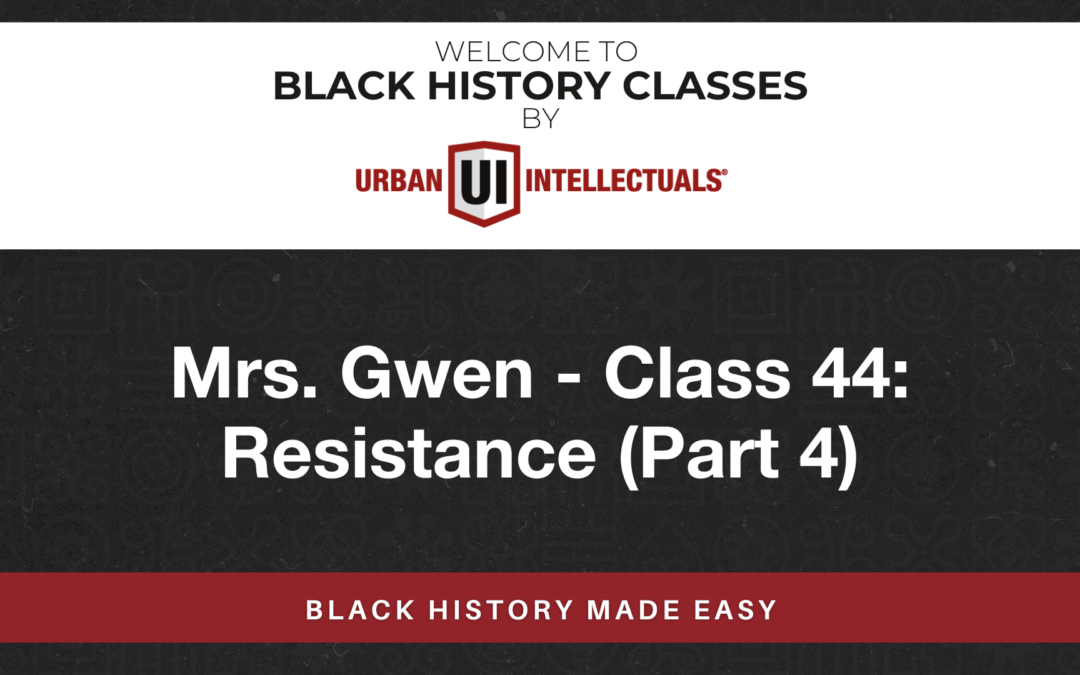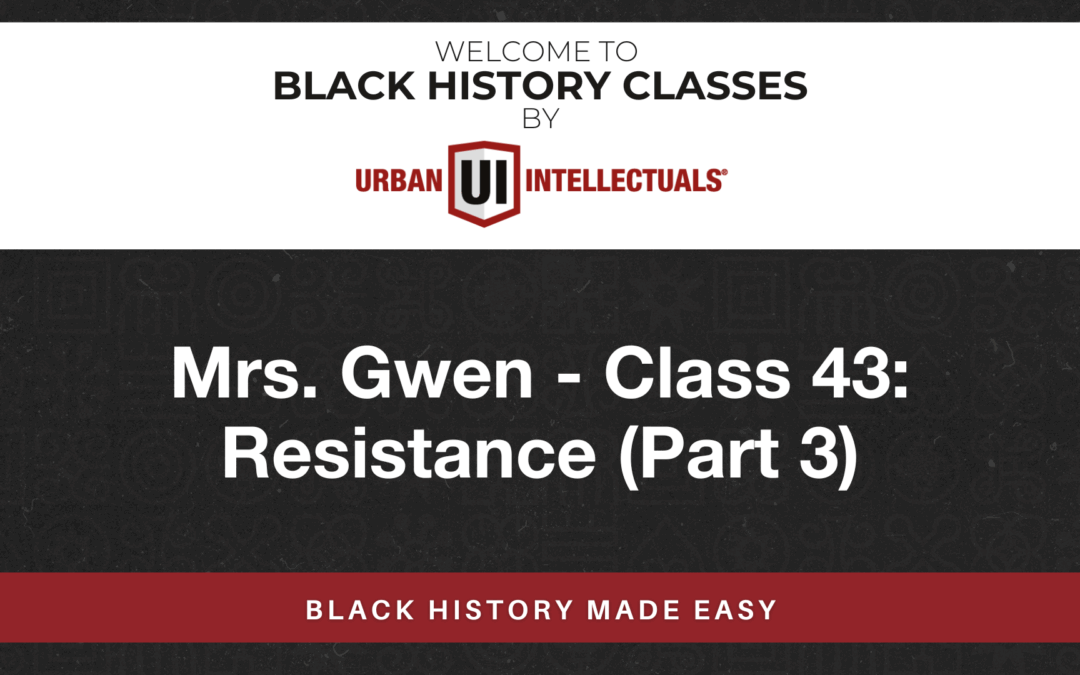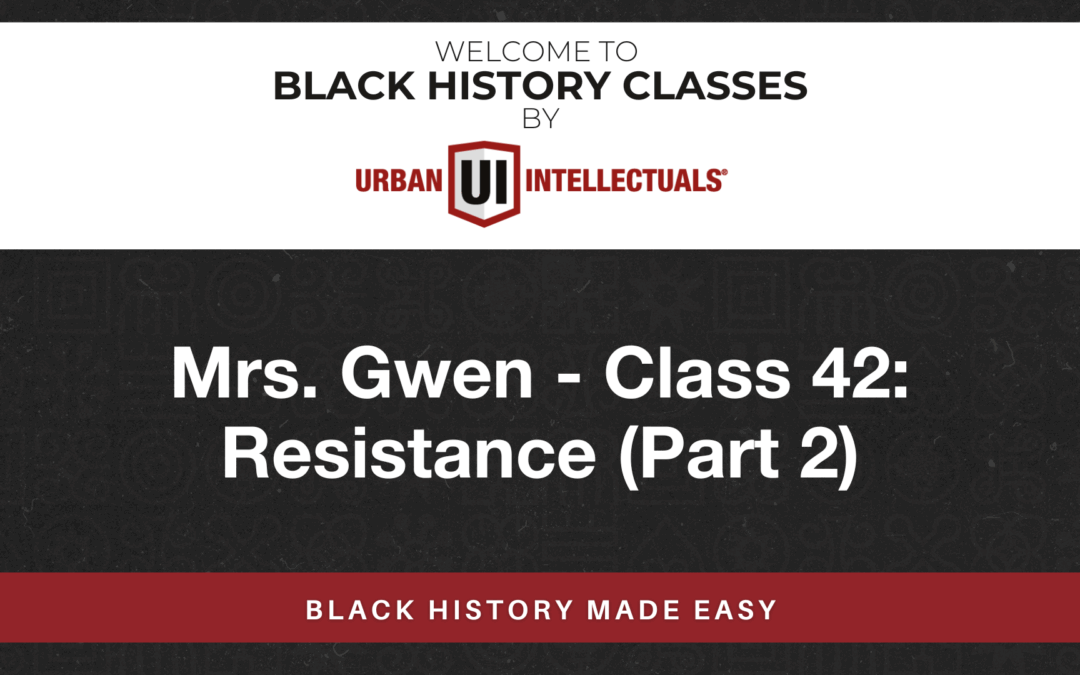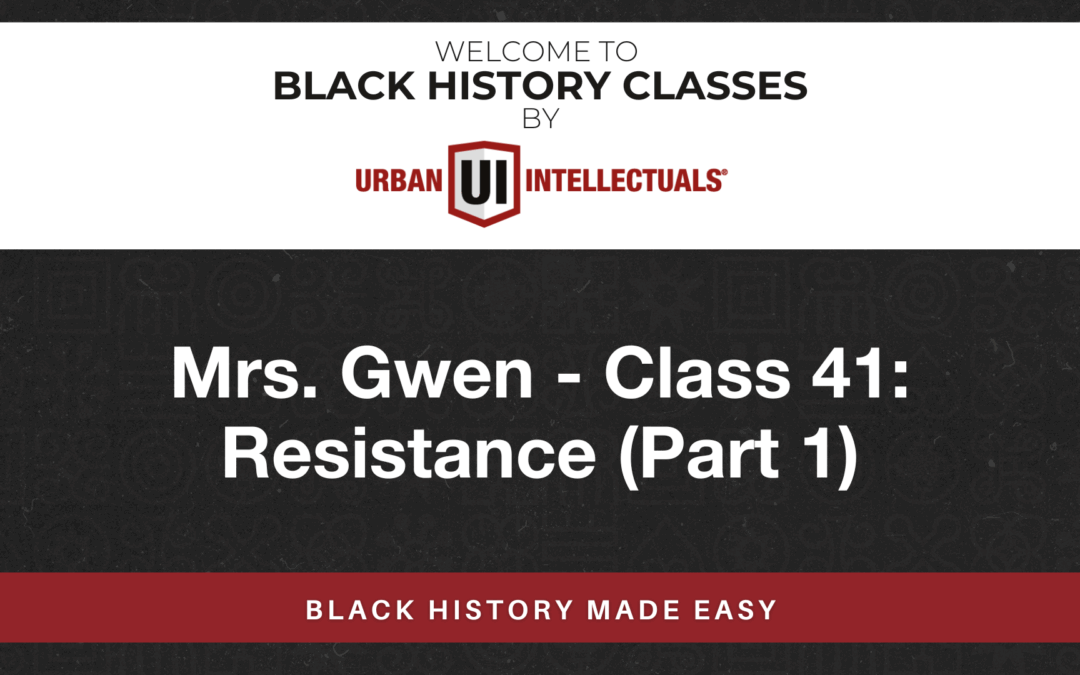
Class 44: Resistance (Part 4)
CLASS OVERVIEW
Take a quiz to decide which path you would take in the struggle for Civil Rights and listen to the following discussion. Learn about William Monroe Trotter.
BEFORE YOU GET STARTED:
- Please check the materials that go with this lesson and print relevant materials.
- Also, check out the books and products the teachers use for further learning.
- Reach out to support@urbanintellectuals.com if you have any questions or issues.
- Some links may be affiliate links where we may earn a small commission from purchases.
Sources:
N/A
Study Guide
William Monroe Trotter was born on **April 7, 1872**, in **Chillicothe, Ohio** “1”). He was the **third child** of **James Monroe Trotter** and **Virginia Isaacs Trotter**, but the first to survive infancy. His father, James, was born into slavery in Mississippi but was later freed and became a **lieutenant in the 55th Regiment of the Massachusetts Volunteer Infantry (Colored)** during the Civil War.
Trotter grew up in **Hyde Park, Massachusetts**, in a well-to-do family that emphasized education and activism. He excelled academically, becoming **valedictorian** of his high school class and later attending **Harvard University**, where he was the **first African American to earn a Phi Beta Kappa key**. His upbringing instilled in him a strong sense of duty to fight racial discrimination, which shaped his later activism.
William Monroe Trotter’s early life was shaped by several key influences:
– **His Parents’ Activism**: His father, **James Monroe Trotter**, was born into slavery but later became a **Union Army officer** and a **Recorder of Deeds** in Washington, D.C. His mother, **Virginia Isaacs Trotter**, was also deeply involved in the fight against racial discrimination. Their commitment to civil rights instilled in Trotter a strong sense of purpose.
– **Education and Excellence**: Trotter attended **Harvard University**, where he became the **first African American to earn a Phi Beta Kappa key**. His academic success reinforced his belief in the power of education as a tool for racial uplift.
– **Exposure to Racial Inequality**: Growing up in **Hyde Park, Massachusetts**, he witnessed both the privileges of his middle-class upbringing and the persistent racial barriers that African Americans faced. This dual perspective fueled his determination to challenge segregation and discrimination.
– **Influence of W.E.B. Du Bois**: Trotter was a contemporary of **W.E.B. Du Bois**, and their shared commitment to civil rights led to the formation of the **Niagara Movement**, a precursor to the NAACP. However, Trotter often took a more radical stance than Du Bois, advocating for direct action against racial injustice.
His upbringing and experiences laid the foundation for his later activism.
William Monroe Trotter challenged Booker T. Washington’s accommodationist approach because he believed it compromised the fight for full civil rights. Washington advocated for economic progress and vocational training for Black Americans while avoiding direct confrontation with white supremacy. Trotter, however, saw this as accepting second-class citizenship and argued that Black Americans should demand immediate equality rather than settling for gradual change.
Trotter used his newspaper, The Guardian, to criticize Washington’s influence, accusing him of silencing dissent and controlling Black leadership through financial and political connections. He also helped form the Niagara Movement, which later influenced the NAACP, to push for direct action against racial injustice.
His opposition to Washington was bold and uncompromising, making him a key figure in the early civil rights movement.
Woodrow Wilson agreed to meet with **William Monroe Trotter** because Trotter was a prominent civil rights activist and journalist who had supported Wilson’s presidential campaign in **1912**. Trotter believed Wilson would uphold his promises of fair treatment for Black Americans, but when Wilson’s administration **expanded segregation in federal offices**, Trotter sought a meeting to challenge these policies.
Trotter met with Wilson **twice**, in **1913 and 1914**, as a representative of the **National Independent Political League**. He hoped to persuade Wilson to reverse segregation policies, arguing that Black and white clerks had worked together for decades without issue.
William Monroe Trotter met with President Woodrow Wilson in 1914 to protest Wilson’s support for segregation of Black federal employees. Trotter, representing the National Independent Political League, confronted Wilson directly at the White House, arguing that segregation was unjust and unnecessary since Black and white clerks had worked together for decades without issue.
During the meeting, Trotter boldly challenged Wilson, questioning his integrity and demanding action. Wilson, offended by Trotter’s direct approach, had him removed from the White House. Despite this, Trotter took his case to the press, publicly criticizing Wilson’s policies and exposing the administration’s role in expanding segregation.
His confrontation with Wilson was a defining moment in early civil rights activism, demonstrating the power of direct action and fearless advocacy In exposing the administration’s role in reinforcing segregation. His bold activism became a model for later civil rights movements.
William Monroe Trotter was a **trailblazing civil rights activist and journalist** who fought tirelessly for racial equality in the early 20th century. Here are some of his major accomplishments:
– **Founded The Guardian (1901)**: He established this influential African American newspaper to challenge racial injustice and oppose Booker T. Washington’s accommodationist policies.
– **Co-founded the Niagara Movement (1905)**: Alongside W.E.B. Du Bois, he helped create this precursor to the NAACP, advocating for full civil rights for Black Americans.
– **Challenged President Woodrow Wilson (1914)**: He confronted Wilson over the introduction of segregation in federal workplaces, making national headlines
– **Protested The Birth of a Nation (1915)**: He led efforts to ban screenings of the racist film, though he was only partially successful.
– **Advocated for Black representation at the Paris Peace Conference (1919)**: Despite opposition from the U.S. government, he attended as a delegate of the National Equal Rights League.
Trotter’s **unwavering activism** made him a key figure in the fight for racial justice, even when his methods were controversial. His legacy continues to inspire civil rights movements today.
William Monroe Trotter passed away on **April 7, 1934**, which was also his **62nd birthday**. His death was the result of a **fall from the roof of his home in Boston**. While the exact circumstances remain uncertain, it is known that he was experiencing **depression and personal struggles** at the time. His legacy as a **civil rights activist and journalist** continues to be recognized today.
THE QUIZ
If you were in the Civil Rights time, would you be with the Non-violence of the Civil Rights leadership or with the Deacons of Defense and Justice and the Black Panthers and Why?










